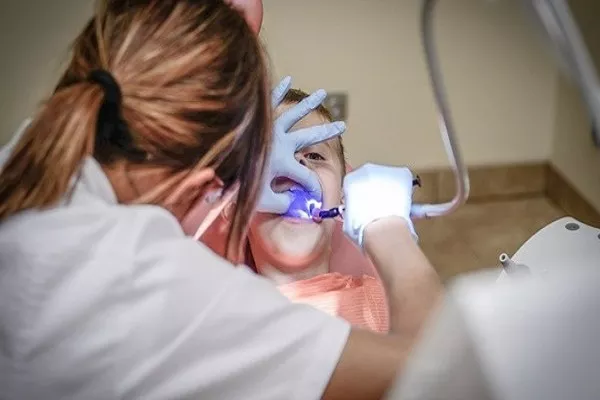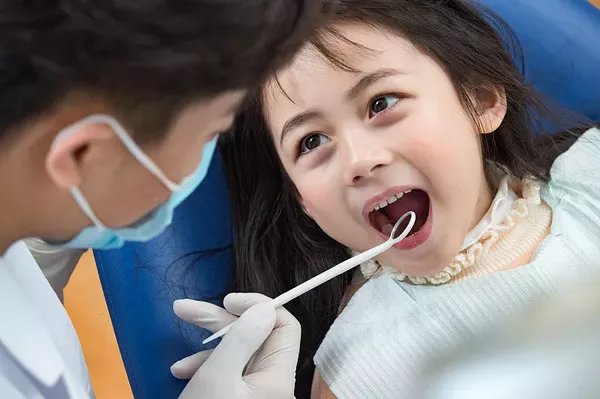Gingivitis, the inflammation of the gums, is a prevalent oral health issue that demands timely and effective intervention. Dentists play a crucial role in the treatment of gingivitis, employing a variety of strategies to alleviate symptoms, eradicate causative factors, and prevent its progression into more severe forms of periodontal disease. In this comprehensive article, we will explore in detail how dentists treat gingivitis, examining the various procedures, techniques, and preventive measures they employ to restore gum health and maintain optimal oral well-being.
I. Introduction
Gingivitis, often considered a mild and reversible form of gum disease, requires professional attention to prevent its advancement and mitigate potential complications. Dental professionals follow a systematic approach to treating gingivitis, combining patient education, clinical interventions, and preventive strategies to achieve optimal results.
II. Initial Assessment and Diagnosis
A. Thorough Examination
The first step in treating gingivitis is a comprehensive examination of the patient’s oral health. Dentists assess the color, texture, and appearance of the gums, checking for signs of inflammation, bleeding, and other indicators of gingival health.
B. Periodontal Probing
Using a periodontal probe, dentists measure the depth of spaces between the teeth and gums. Increased pocket depth may suggest the presence of gingivitis or its progression to periodontitis.
C. X-rays
In some cases, X-rays may be taken to evaluate the extent of bone loss and assess the overall health of the teeth and supporting structures.
III. Professional Dental Cleanings
A. Scaling
One of the primary interventions in treating gingivitis is dental scaling. This procedure involves the removal of dental plaque and calculus (tartar) from the tooth surfaces and below the gumline using specialized instruments. Scaling helps eliminate the source of inflammation and provides a clean surface for the gums to heal.
B. Root Planing
Root planing is often performed in conjunction with scaling. This process smoothes the root surfaces of the teeth, making it more challenging for bacteria to reattach and facilitating the reattachment of the gums to the tooth surfaces.
IV. Antibacterial and Antimicrobial Agents
A. Prescription Mouthwashes
Dentists may recommend prescription mouthwashes containing antimicrobial agents, such as chlorhexidine, to control bacterial growth and reduce inflammation. Patients are instructed on proper usage and advised on any potential side effects.
B. Topical Antibiotics
In some cases, dentists may prescribe topical antibiotics, such as antibiotic gels or ointments, which can be applied directly to the affected gum tissues. These medications target localized infection and promote healing.
V. Education and Patient Counseling
A. Oral Hygiene Instruction
Dentists provide detailed oral hygiene instructions tailored to each patient. This includes guidance on proper brushing and flossing techniques, the importance of regular dental check-ups, and the use of additional oral care products, such as interdental brushes or soft picks.
B. Nutritional Counseling
Dentists may offer nutritional counseling, emphasizing the importance of a well-balanced diet rich in vitamins and minerals, particularly vitamin C, to support overall gum health and the body’s ability to combat infection.
C. Smoking Cessation Support
For patients who smoke or use tobacco products, dentists play a crucial role in offering support and resources for smoking cessation. Quitting smoking is integral to successful gingivitis treatment and preventing its recurrence.
VI. Ongoing Monitoring and Follow-Up
A. Regular Dental Check-ups
After the initial treatment, patients are advised to schedule regular dental check-ups. These appointments allow dentists to monitor the progress of treatment, assess the overall oral health, and address any emerging issues promptly.
B. Periodontal Maintenance
Patients with a history of gingivitis may require more frequent dental cleanings, known as periodontal maintenance, to prevent the recurrence of inflammation and maintain gum health.
VII. Surgical Interventions (Advanced Cases)
A. Flap Surgery
In cases where gingivitis has progressed to advanced periodontitis, flap surgery may be recommended. This surgical procedure involves lifting the gums to access and clean the tooth roots, eliminating deep-seated infection and promoting gum reattachment.
B. Bone Grafting
In situations where bone loss has occurred, dentists may perform bone grafting to restore the lost bone tissue. This procedure helps stabilize teeth and provides a supportive foundation for gum reattachment.
C. Tissue Grafting
Tissue grafting involves taking a small piece of tissue, often from the roof of the mouth, and attaching it to the affected gum area. This procedure is utilized to cover exposed tooth roots, reducing sensitivity and enhancing the appearance of the gums.
VIII. Collaborative Care and Multidisciplinary Approach
A. Collaboration with Periodontists
In complex cases, dentists may collaborate with periodontists, specialists in the treatment of gum diseases. Periodontists bring advanced expertise and may recommend specialized procedures to address specific challenges associated with gingivitis.
B. Collaboration with Hygienists and Dental Assistants
Dental hygienists and assistants play integral roles in supporting gingivitis treatment. They assist in dental cleanings, provide education on oral hygiene practices, and reinforce the importance of follow-up care.
IX. Home Care Recommendations for Patients
A. Regular Brushing and Flossing
Patients are encouraged to maintain rigorous oral hygiene practices at home. Brushing teeth at least twice a day using fluoride toothpaste and flossing daily are essential to prevent the buildup of plaque and maintain gum health.
B. Use of Antimicrobial Mouthwashes
Patients may be advised to incorporate antimicrobial mouthwashes into their daily oral care routine. These mouthwashes help control bacterial growth and promote a healthy oral environment.
C. Regular Follow-Up with Dentist
Patients should adhere to their scheduled follow-up appointments with the dentist to ensure ongoing monitoring of their oral health and timely intervention if needed.
X. Conclusion
In conclusion, the treatment of gingivitis involves a multifaceted approach that combines professional dental interventions, patient education, and ongoing monitoring. Dentists play a pivotal role in addressing the root causes of gingivitis, eliminating bacterial sources, and guiding patients toward optimal oral health practices. With a combination of scaling, root planing, antimicrobial agents, patient education, and, when necessary, surgical interventions, dentists can effectively manage gingivitis and prevent its progression to more severe periodontal diseases. Collaborative care, home care recommendations, and regular follow-ups contribute to the long-term success of gingivitis treatment, empowering individuals to maintain healthy gums and overall oral well-being.
Related topics:
Unlocking a Healthy Smile: Effective Ways to Treat Gingivitis with Braces
What to do if I have gingivitis?





























